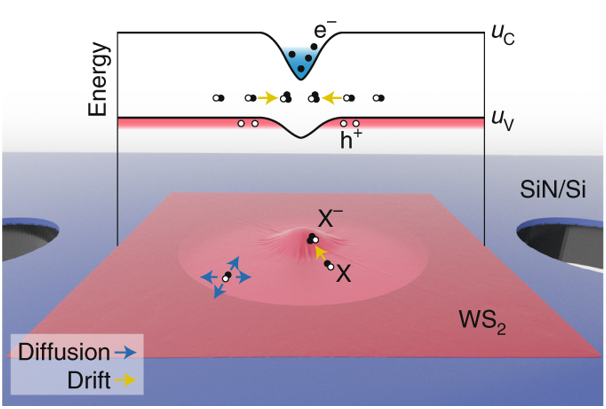In 2004, the thinnest material known until then - graphene - burst into our world. Graphene is a material that consists only of carbon atoms arranged in a honeycomb lattice. Its uniqueness is that the atoms are arranged in only two dimensions so that the layer of the honeycomb has a thickness of a single atom. Graphene was the first two-dimensional material introduced to the world
Dr. Moshe Haratz - the laboratory for two-dimensional materials
What is two-dimensionality expressed in? After all, the atoms themselves are still three-dimensional world! The definition of a two-dimensional material stems from the fact that electrons can only move in two dimensions determined by the atom layer, are prevented from moving in the third dimension, outside the layer
Since it's the discovery of 2D materials, this field has evolved, and today there are hundreds of two-dimensional materials. My lab focuses on advanced optical measurements of two-dimensional semiconducting materials under elastic strain.
The obvious question arises - how can a two-dimensional material be elastically stretched? Is it possible to grab a material with the thickness of a single atom with tongs and stretch it? To this end, part of the laboratory's work is the development of new methods of elastic stretching of two-dimensional materials.
The research in two-dimensional materials is moving to the next stage - connecting different two-dimensional materials on top of each other. This can be seen as a Lego game with an additional degree of freedom that does not exist in normal Lego - the angle of rotation between the honeycomb of one material versus the honeycomb of the next layer of the next material in line. With the help of controlling this angle, they were able to show interesting phenomena, among them the creation of single photons used for secure quantum communication as well as superconductivity in graphene layers for which the Wolf Prize in Physics was awarded in 2020.
The variety of subjects that the laboratory investigates ranges from classic technological subjects such as the sensing of dangerous gases by two-dimensional materials, elastic measurements of two-dimensional materials in different layers and at different angles between the layers, and the creation of single photons, which is an advanced quantum technology. Single photons are a building block in quantum communication as mentioned before, and they exist in two-dimensional materials although the cause of their creation is still unclear. The laboratory is equipped with cryogenic equipment that allows samples to be cooled to the temperature of liquid helium (4 degrees Kelvin above absolute zero), and together with the optical and elastic methods that the laboratory excels in, we are investigating the mechanism of creating single photons with future uses in secure quantum communication.

The WS2 flake suspended on top of a hole in the SiN/Si membrane is indented from the bottom by an AFM cantilever
From: Frisenda, R., Castellanos-Gomez, A. Strain creates a trion factory. Nat. Photonics 14, 269–270 (2020).
